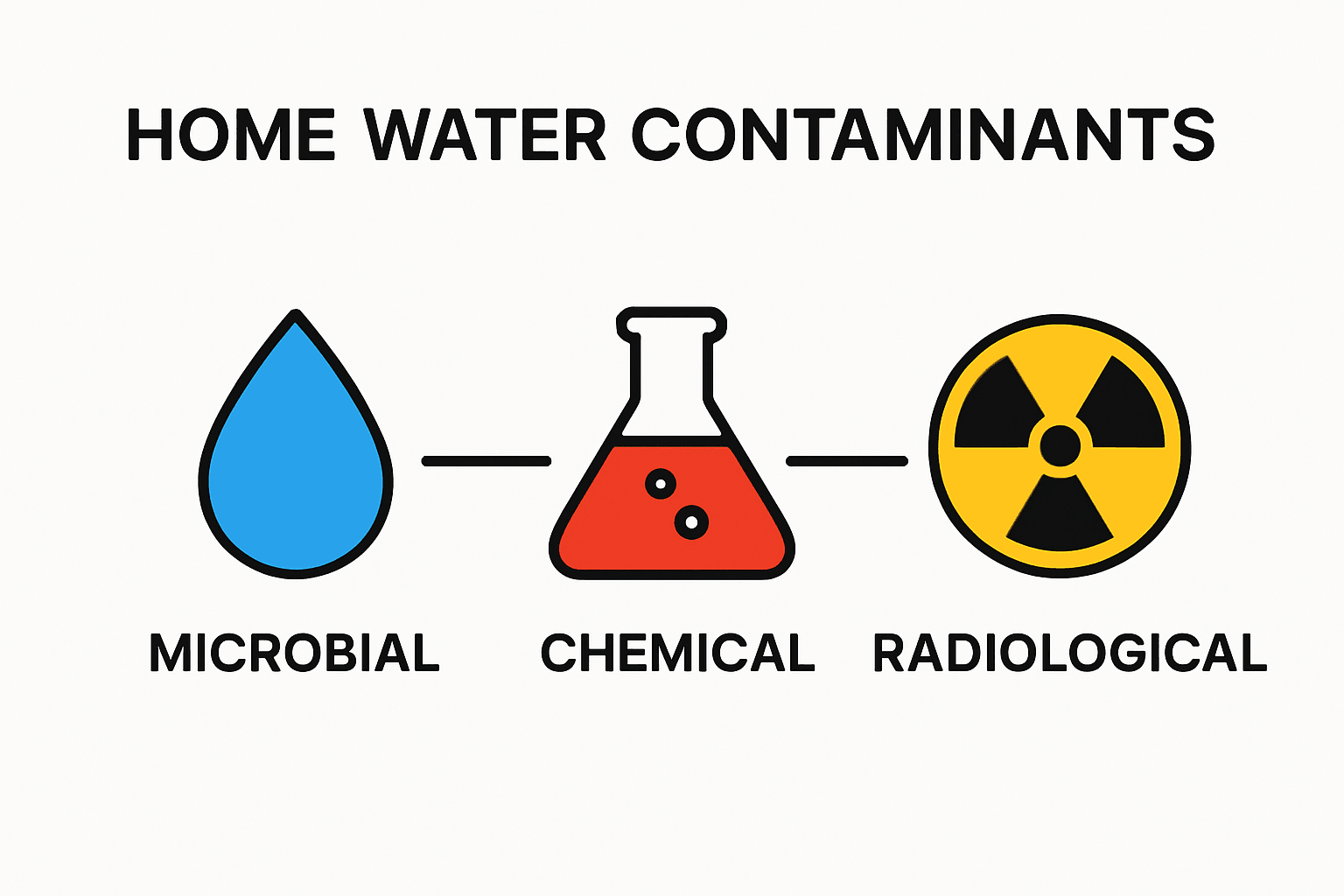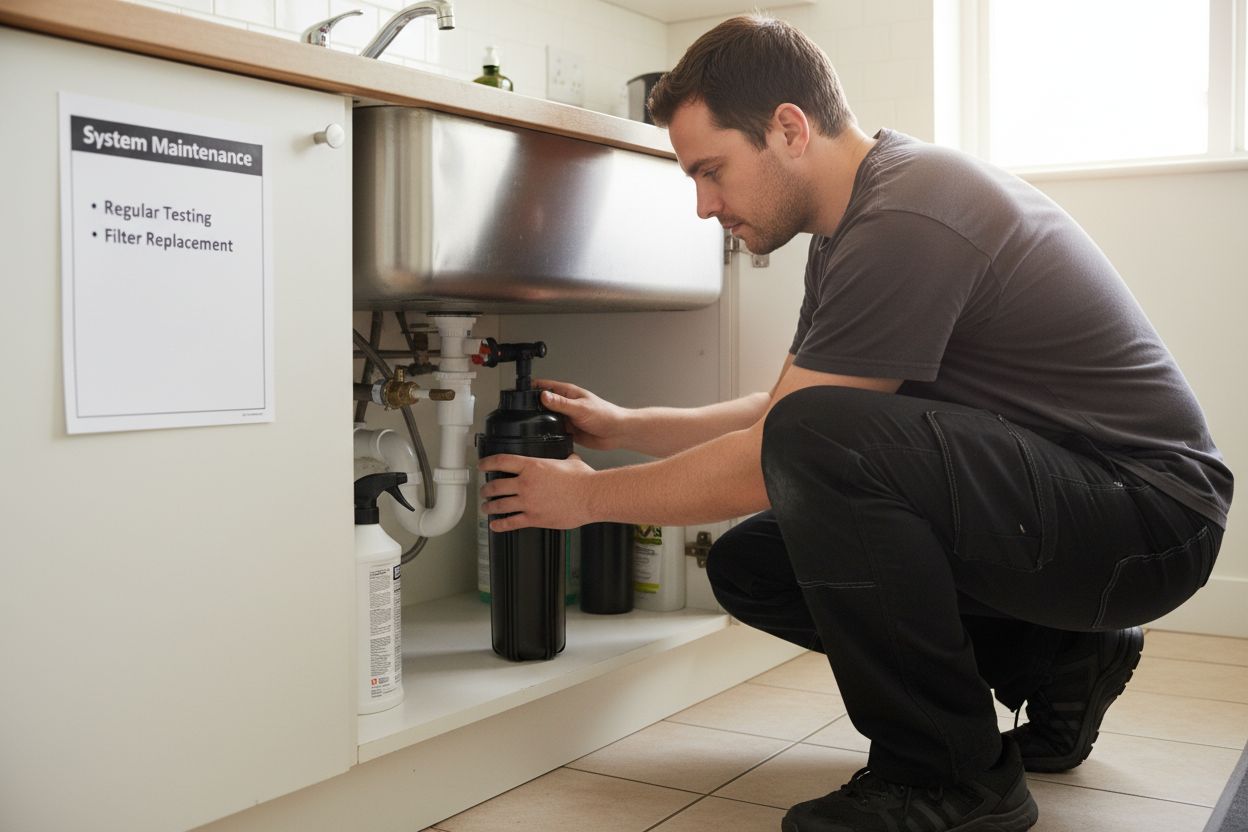Uncategorized
Understanding the Importance of Water Quality at Home
The water coming out of your tap might look crystal clear and taste just fine. But looks can be deceiving. Even water that passes visual checks can hide over 90 different contaminants, according to the EPA. Most people never realize what’s really in their drinking water until it starts to affect their health and daily life in ways they never expected.
Table of Contents
- What Is Water Quality And Why It Matters
- Common Contaminants Affecting Home Water Supplies
- How Water Filtration Systems Improve Quality
- Practices For Maintaining Water Quality At Home
Quick Summary
| Takeaway | Explanation |
|---|---|
| Understand water quality indicators. | Key parameters include chemical composition, microbial content, and physical characteristics that affect safety. |
| Regular water testing is critical. | Annual testing can detect contaminants and prevent health issues before they arise. |
| Utilize effective filtration systems. | Advanced technology like reverse osmosis and carbon filters can significantly enhance water safety. |
| Maintain filtration systems consistently. | Regularly replacing filters and inspecting systems ensures continued effectiveness and water quality. |
| Be aware of potential contaminants. | Common threats include heavy metals, microbes, and chemicals, each requiring specific treatment strategies. |
What is Water Quality and Why It Matters
Water quality encompasses the physical, chemical, biological, and radiological characteristics that determine the suitability and safety of water for specific uses, particularly drinking and household consumption. Understanding water quality is essential because the water flowing from your tap can contain numerous potential contaminants that impact human health and overall wellness.
The Fundamental Components of Water Quality
Water quality is evaluated through multiple critical parameters that assess its safety and usability. According to the Environmental Protection Agency, these parameters include:
- Chemical Composition: Measuring levels of minerals, metals, and potential harmful substances
- Microbial Content: Detecting bacteria, viruses, and other microorganisms
- Physical Characteristics: Assessing color, turbidity, temperature, and sediment levels
Each of these components plays a significant role in determining whether water is safe for consumption. Even water that appears clear can contain invisible threats that compromise its overall quality and potentially impact your health.
Health Implications of Poor Water Quality
Contaminated water can lead to serious health risks, ranging from mild gastrointestinal issues to severe long term medical conditions. Potential contaminants might include lead, arsenic, nitrates, and harmful microbes that can cause immediate or cumulative health problems.
For homeowners seeking comprehensive protection, understanding why purify tap water becomes crucial in maintaining a safe household environment. Regular water quality testing and appropriate filtration methods can significantly reduce potential health risks associated with contaminated water sources.
By comprehensively understanding water quality, individuals can make informed decisions about water treatment, ultimately protecting themselves and their families from potential waterborne health hazards.
The Health Implications of Poor Water Quality
Poor water quality represents a significant public health concern that can lead to numerous acute and chronic medical conditions. While water might appear clean, invisible contaminants can pose substantial risks to human health, affecting multiple bodily systems and potentially causing long term complications.
Immediate and Long Term Health Risks
According to the Centers for Disease Control and Prevention, exposure to contaminated water can trigger a range of health problems. These risks are particularly pronounced for vulnerable populations such as children, elderly individuals, and those with compromised immune systems.
The most common health implications include:
- Gastrointestinal Disorders: Frequent diarrhea, stomach cramps, and potential bacterial infections
- Neurological Impact: Potential developmental issues in children from heavy metal exposure
- Chronic Diseases: Increased risk of kidney damage, liver complications, and certain cancers
Specific Contaminant Dangers
Different water contaminants present unique health challenges. Heavy metals like lead can cause severe neurological damage, while microbial contaminants might trigger immediate infectious diseases. Nitrates and agricultural runoff can disrupt cellular functions and potentially lead to more serious long term health consequences.
Understanding why test drinking water becomes crucial in identifying potential health risks before they escalate. Regular comprehensive water testing can help homeowners detect and mitigate potential contamination sources, protecting their families from waterborne health threats.
By recognizing the potential health implications of poor water quality, individuals can take proactive steps to ensure safe, clean water consumption and protect their overall well being.
Common Contaminants Affecting Home Water Supplies
Water contamination represents a complex challenge for homeowners, with multiple potential sources threatening water safety and quality. Understanding these contaminants is crucial for implementing effective water treatment strategies and protecting household health.
Types of Water Contaminants
According to the Environmental Protection Agency, water contaminants can be categorized into several critical groups that pose unique health risks. These contaminants originate from diverse sources, including industrial processes, agricultural activities, natural geological formations, and infrastructure aging.
The primary categories of water contaminants include:

- Microbial Contaminants: Bacteria, viruses, parasites that can cause immediate health problems
- Chemical Contaminants: Synthetic and naturally occurring compounds potentially linked to long term health issues
- Radiological Contaminants: Radioactive elements that can accumulate in human tissues
Specific Sources and Potential Health Impacts
Different contaminants emerge from various environmental and human activity sources. Heavy metals like lead often originate from older plumbing infrastructure, while agricultural runoff introduces nitrates and pesticide residues. Industrial waste can introduce complex chemical compounds that challenge standard water treatment processes.
Exploring water filtration methods becomes essential in addressing these diverse contamination challenges. Advanced filtration technologies can effectively remove or significantly reduce the concentration of harmful substances, providing an additional layer of protection for household water supplies.
By comprehensively understanding water contaminants, homeowners can make informed decisions about water treatment, selecting appropriate filtration systems that target specific regional and infrastructure related risks.
To help clarify risks, the table below summarizes major categories of water contaminants, their common sources, and the health impacts associated with each.
| Contaminant Category | Common Sources | Potential Health Impacts |
|---|---|---|
| Microbial Contaminants | Natural water, sewage, runoff | Stomach cramps, diarrhea, infections |
| Chemical Contaminants | Industrial discharge, agriculture | Kidney damage, neurological issues, cancers |
| Radiological Contaminants | Geological deposits, industrial waste | Cell damage, increased cancer risk |
| Heavy Metals | Old plumbing, manufacturing | Developmental delays, organ damage |
| Nitrates | Fertilizers, agricultural runoff | Blue baby syndrome, cellular disruption |
| Pesticide Residues | Agriculture, runoff | Hormonal imbalance, chronic illnesses |
How Water Filtration Systems Improve Quality
Water filtration systems represent a sophisticated technological approach to transforming potentially contaminated water into safe, clean drinking water. These systems employ multiple advanced techniques to remove harmful substances, ensuring water meets stringent health and safety standards.
Filtration Mechanisms and Technologies
According to the World Health Organization, water filtration involves complex processes that target different types of contaminants through specialized mechanisms. Modern filtration technologies work at microscopic levels to eliminate threats invisible to the naked eye.
The primary filtration mechanisms include:
- Physical Filtration: Removing sediments, particles, and larger contaminants through specialized membranes
- Chemical Filtration: Neutralizing harmful chemical compounds and reducing potentially dangerous molecular structures
- Biological Filtration: Eliminating microorganisms and preventing bacterial growth
Advanced Purification Strategies
Different filtration systems utilize unique approaches to water treatment. Activated carbon filters can remove chlorine and organic compounds, while reverse osmosis systems push water through ultra fine membranes that capture microscopic impurities. Ultraviolet purification techniques offer an additional layer of protection by destroying potential microbial threats.
Understanding the role of filtration technology becomes crucial in selecting the most appropriate water treatment solution for specific household needs. Each filtration method offers distinct advantages, targeting different types of potential contaminants and providing comprehensive water quality improvement.
By implementing advanced water filtration systems, homeowners can significantly reduce health risks, improve water taste and odor, and ensure a consistent supply of clean, safe drinking water for their families.
The following table compares the main types of home water filtration technologies, highlighting their mechanism, main contaminants targeted, and typical maintenance needs for easy reference.
| Filtration Type | Mechanism | Main Contaminants Targeted | Maintenance Needs |
|---|---|---|---|
| Physical Filtration | Membranes trap particles | Sediments, rust, debris | Replace membranes regularly |
| Chemical Filtration | Absorption/chemical reaction | Chlorine, chemical compounds | Change media or cartridges |
| Biological Filtration | Removes microorganisms | Bacteria, viruses, parasites | Clean/sanitize components |
| Reverse Osmosis | Pressure through fine filter | Heavy metals, dissolved solids | Replace RO membrane/filter |
| UV Purification | Ultraviolet light exposure | Microbial contaminants | Replace UV bulb as needed |
Practices for Maintaining Water Quality at Home
Maintaining high quality water requires consistent, proactive approaches that go beyond simple filtration. Homeowners must implement strategic practices that protect water sources, monitor potential contamination risks, and ensure ongoing system effectiveness.
Regular Monitoring and Testing
According to the Environmental Protection Agency, comprehensive water quality management begins with regular testing and monitoring. Understanding the specific contamination risks in your local environment enables targeted prevention strategies.
Key monitoring practices include:
- Annual Water Quality Testing: Comprehensive laboratory analysis of water composition
- Visual Inspections: Checking for sediment, discoloration, or unusual odors
- Infrastructure Assessment: Evaluating plumbing systems for potential contamination sources
Filtration System Maintenance
Water filtration systems require consistent maintenance to remain effective. This involves regularly replacing filters, sanitizing system components, and ensuring all technological mechanisms function optimally. Different filtration technologies demand specific maintenance protocols, ranging from simple cartridge replacements to more complex system cleanings.
Explore essential water purification best practices to develop a comprehensive understanding of maintaining your home water treatment system. Proper maintenance not only extends equipment lifespan but also guarantees continued high quality water production.

By implementing systematic monitoring, conducting regular maintenance, and staying informed about potential water quality challenges, homeowners can create a robust defense against contamination and ensure safe, clean water for their families.
Take Control of Your Home’s Water Quality Today
Are you worried about invisible contaminants in your tap water, as described throughout this guide on water quality? Ensuring your family is safe from harmful chemicals, microbes, and unwanted impurities can feel overwhelming, especially when you cannot see or smell the dangers. Many homeowners share the concern of safeguarding their loved ones against unseen risks and long-term health effects caused by poor water quality. Now is the time to make your home a healthier place with solutions built on scientific research and advanced filtration technology.

Start your journey to cleaner, safer water by exploring the Uncategorized Archives – Coway Water Purifier for essential tips and products. Choose a water purifier designed for powerful protection and ongoing peace of mind. Visit Coway Water Purifier now and find the perfect system for your family. Prioritize your health by making a decision that safeguards your home’s water quality. Don’t wait—protect what matters most today.
Frequently Asked Questions
What is water quality and why is it important?
Water quality refers to the physical, chemical, biological, and radiological characteristics of water that determine its safety for consumption. It is crucial because contaminated water can pose significant health risks to humans, affecting overall wellness.
What are common contaminants found in home water supplies?
Common contaminants in home water supplies include microbial contaminants (like bacteria and viruses), chemical contaminants (such as heavy metals and pesticides), and radiological contaminants (radioactive elements). Each type presents specific health risks.
How can home water filtration systems improve water quality?
Home water filtration systems use various technologies to remove harmful substances from water. These include physical filtration to remove sediments, chemical filtration to neutralize harmful compounds, and biological filtration to eliminate microorganisms.
What practices can I adopt to maintain water quality at home?
To maintain water quality at home, regularly test your water for contaminants, conduct visual inspections for any changes in appearance or odor, and ensure your filtration system is properly maintained with timely filter replacements.
Recommended
- Understanding Why Test Drinking Water for Safety – Coway Water Purifier
- Understanding Water Purification Terms Explained Clearly – Coway Water Purifier
- 7 Benefits of Water Filtration for Your Home and Health – Coway Water Purifier
- Understanding Why Purify Tap Water for Health and Safety – Coway Water Purifier

